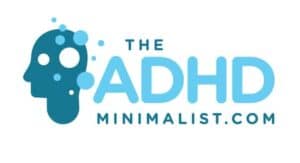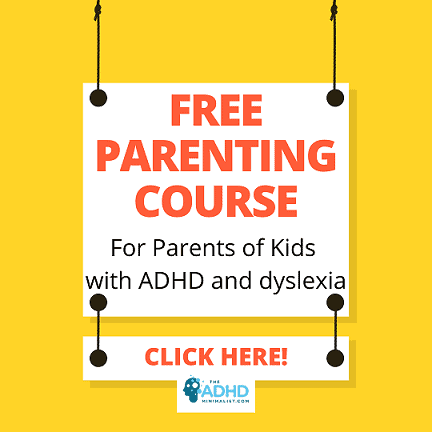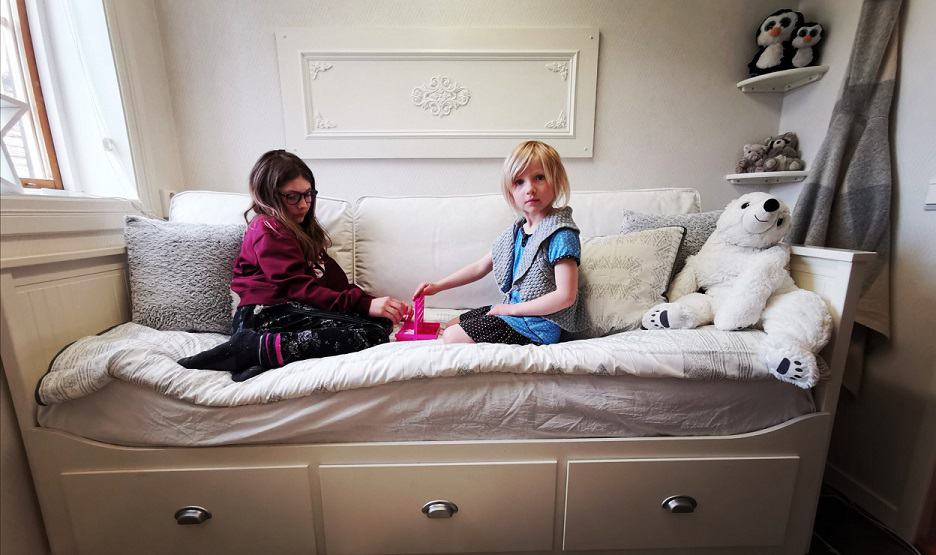
What are the benefits of playing games with children who have ADHD and Dyslexia?
Board games bring families closer together, encourage friendships, teach life skills, lengthen children’s attention spans, and develop the brain.
These amazing side effects of having fun together work for anyone.
Kids with a double diagnosis (both ADHD and Dyslexia) should spend extra time playing games because this is by far the most fun way to improve executive functioning skills and attention spans!
Games can be used to lengthen your child’s attention span even if your child doesn’t have a diagnosis.
Maybe he/she just needs to work on skills they will need to start school.
Games are a great tool for building skills even if you only suspect your child has ADHD or Dyslexia. Don’t wait for a diagnosis to help your child build life skills.
There are endless benefits your whole family can enjoy from playing games!
Taking time to sit down together as a family, putting your phones and electronics away for some screen-free time, and playing board games that induce laughter are just a few benefits.
We have several different diagnoses in our family
My son Lage (13) has ADHD predominantly hyper and dyslexia.
My daughter Maria (10) has ADHD predominantly inattentive or what was called ADD and she has dyslexia.
My five-year-old is a bit too young to test for disorders, but she is starting school this fall and it will be interesting to see how that goes.
I (Annie) have dyslexia, and my husband David and I probably both have a touch of ADHD although we were born before it was commonly diagnosed in the ’70s and ’80s.
I am excited to share some of our family’s favorite games with you. These are games that one or possibly all of us really enjoy.
ADHD/dyslexia and ADD/dyslexia combinations caused us to take a different approach to game playing.
Annie Eklöv
The games on our list are great games whether you have a diagnosis or not.
They are fun to play if you only have Dyslexia or just have an ADHD/ADD diagnosis, but I found that these games are wonderful for ADHD/ADD diagnoses combined with dyslexia.
Often kids with ADHD/ADD also have dyslexia.
I wish doctors and researchers would spend more time considering this ADHD/Dyslexia link and researching how it affects kids.
Games for 5-7 year olds
1) Carcassonne
(Carcassonne in Swedish)
We play this game often.
My middle daughter (Maria) could play this game from the age of six, with help from an adult.
She quickly caught on and could play with her older cousins without adult help.
My youngest is five. She started playing Carcassonne this year.
She usually wants to be her own team, but she asks for help when she needs it. We usually keep an eye out and make suggestions if we see that she needs help.
The basic game is like putting a puzzle together, but there are endless combinations and you get points for making roads and cities among other things.
There are many expansions you can add to this game if you get tired of the original version.
Carcassonne is great if you have kids of a wide range of ages.
Our oldest is 13 and our youngest is five. This game is one that we can all play together and we all think it’s fun!
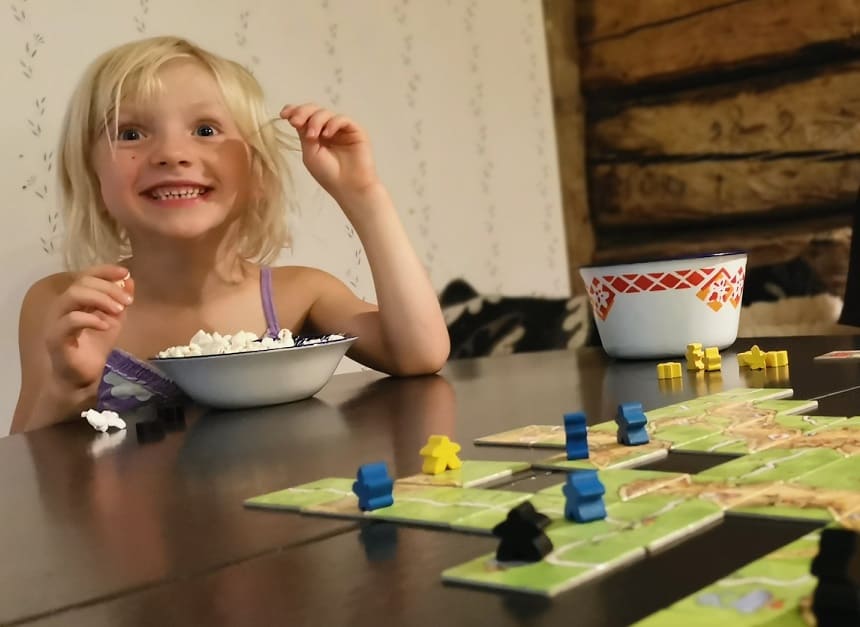
- The Game teaches = The game lets kids practice finishing what they start.
In order to get points, you need to finish your city or road.
If the game ends and you have not finished, you may get half of your points or none at all depending on if you have pieces that disqualify you from receiving points if the city isn’t finished.
Kids practice taking turns, and understanding strategies as well.
- Game length = This game can be as short or as long as you like just limit the number of pieces in the game.
My kids with ADHD/ADD can play this game without losing focus, but if you have kids who have trouble focusing I wouldn’t have more than 4 players. The fewer the players the faster the game goes.
- Reading required = None, after the instructions are explained, but often my kids ask me to come and help them count the points when the game is over.
Counting points is a big job if you have lots of players.
You may need to check the game manual if you don’t remember how many points things are worth. The game takes long enough to play that I am not called on to check points that often.
- Number of players = On the basic game I would say probably not more than 5 players. We have several extensions which give you extra pieces, so we have played with 8 people, but it does take longer to play.
If you are thinking about buying this game I suggest buying all the expansions in the Big Box.
It will save you money in the long run. You can check out the link to the Carcassonne Big Box at the GameNerdz below.
https://www.gamenerdz.com/carcassonne-big-box-2017/?aff=78
They also sell My FIRST Carcassonne https://www.gamenerdz.com/carcassonne-my-first-carcassonne/?aff=78
My daughter recently discovered a Carcassonne spin-off game at a friend’s house called Carcassonne South Seas that she thought was fun. Check that out below.
https://www.gamenerdz.com/carcassonne-south-seas/?aff=78
2) Dominoes
(Domino in Swedish)
My youngest daughter Frida recently became interested in playing dominoes.
She is almost six. We have a game with animals instead of numbers.
I would suggest buying the game with numbers because the dots representing each number help kids associate an actual amount with a number.
- The game teaches = If you have the numbers version of the game, it can help with numbers recognition and learning how many of something makes up a number. For really small kids just matching animals together is good brain development.
- Game length = 10 min
- Reading required = None, after the instructions are explained.
- Number of players = 2-4
3) Blokus
(Blokus in Swedish)
Boardgame from Mattel seems to be for sale in most countries.
This game is one that my daughter who is dyslexic caught on to really quickly.
The game was a Christmas gift which she has really enjoyed.
My husband played it with her one time explaining the rules, and after that, she was able to play with friends or siblings without any help.
- The game teaches = Helps develop Spatial Awareness, and kids practice turn taking.
- Game length = 10-20 min
- Reading required = None, after the instructions are explained
- Number of players = 2-4
4) Go fish
(Finns i Sjön in Swedish)
My Girls like Go fish.
This is a classic game in the USA. It can improve language skills. Kids ask for different fish trying to find a pair.
My daughter, who didn’t know what the fish was called, when we first started playing this game, would describe the fish which is also a good way to expand your vocabulary.
- The game teaches = Skills for turn taking, helps kids practice giving away cards when asked (Many kids struggle with this), children learn to communicate with each other, and they learn the names of fish.
- Game length = 10 -15 min.
- Reading required = None, once the rules are explained.
- Number or players = 2-6 players
GO Fish can be played with a regular deck of cards if you can’t find the classic game.
5) Ker Plunk
(KerPlunk in Swedish)
The game looks a bit different when you buy it in Sweden. The picture is the USA version.
This game is easy for kids to play without any help from adults.
I got this game out when my daughter was struggling with friends and needed something structured to do when she had friends over.
- The game teaches = Helps kids improve logical thinking skills. (If I remove this stick will it cause a ball to fall?)
- Game length = 10 minutes
- Reading required = None, after the instructions are explained.
- Number of players = 2 – 4 players
6) Diggin’ Doggies
(Vilda Valpar in Swedish)
The Swedish and English versions of this game look slightly different, but the basic game is the same.
My five-year-old can play this game with her friends (Five and six-year-olds) without any help from us.
Three-year-olds will need help from an older sibling or a parent, but most three-year-olds like this game.
The Dogs are looking for bones.
You push on the doghouse and a dog barks one, two, or three times.
This tells kids how many steps their dog can take when looking for his bones.
They need to find bones that are the same color as the dog.
- The game teaches = Kids practice patience and taking turns especially if four people are playing.
The game is partially strategy and partially luck.
Sometimes it can be frustrating because the child doesn’t get the right amount of barks, so they can’t get to his/her bone.
This is a good life lesson.
Sometimes things go well for us, sometimes they do not, and sometimes things happen that are out of our control.
- Game length = The game time depends partly on where the dog’s bones are and how many barks the dog gets. It’s taken us anywhere from 10 to 20 minutes to play.
- Reading required = None, after the instructions are explained.
- Number of players = 2-4 players
7) Tenzi
(Tenzi in Swedish)
We usually play the game starting with 1 and working our way up to 6. The first person to roll all sixes wins, but you can play the game an easier way.
For very small children it’s easier to roll the dice and pick the number, they have most of.
Then they can try to roll the rest of the dice to that same number.
When you have 3-6-year-olds playing you may consider each round to be one complete game.
My mother gave this game to my cousin’s children one Christmas. This inspired my cousin who is a first-grade teacher to take the game to class.
She thought it could help her students with numbers recognition.
- The game teaches = Numbers recognition
- Game length = 5 mins for one round of the classic game (Make this a complete game for small kids) 15-20 to play the whole game, but it can go faster if you get lucky and roll lots of the same number.
- Reading required = None, after the instructions are explained.
- Number of players = You need at least 2 players. Your players are only limited by the amount of dice you own. Everyone needs their own set.
8) Tic tac toe
(luffarschack in Swedish)
My kids like Tic tac toe.
We usually have a nicer wooden version of the game sitting on our coffee table. The kids pick it up and play it every once in a while.
Most kids learn tic tac toe early. It’s easy to play and short which makes it a good game for kids with ADHD, ADD, or Dyslexia.
Younger kids usually just put X’s or O’s wherever they like without any strategy.
They soon learn that with a little bit of strategy it’s easier to win.
- The game teaches = Logical thinking and taking turns.
- Game length = 5 to 7 minutes.
- Reading required = None, after the instructions are explained.
- Number of players = two
9) Connect Four
(Fyra i rad in Swedish)
This is a classic game in many countries.
Like Tic tac toe it’s a game that young kids like to play.
It’s fun to plop the pieces into the slots and practice taking turns even if small children don’t understand the strategy behind the game.
Children often catch on fast and learn that their actions evoke a reaction in their opponent.
This ia a great game for learning strategy skills.
It’s a great game for kids with ADHD, ADD, or Dyslexia to play without adult help.
- The game teaches = Kids learn game strategy skills, they develop logical thinking, and it teaches turn taking.
- Game length = 5 -10 minutes
- Reading required = None after the rules are explained.
- Number of players = Two
10) Chinese Checkers
(Kinaschack in Swedish)
Both my son and daughter really liked Chinese Checkers when they were around 5-7 years old.
They have of course played this game since, but it’s not really asked for any more.
This game is short enough for kids who have the shortest attention spans if played with only 2 players.
Chinese Checkers is a classic game that most elderly grandparents or great-grandparents know how to play.
You can use this game for intergenerational bonding.
- The game teaches = This game helps kids think strategically and develop the ability to put themselves in their opponents shoes and guess what their opponent will do next.
Kids need to learn to help themselves win, without giving their opponent a free pass to the other side of the board.
- Game length = 10-20 min depending on how many players you have.
- Reading required = None, after the rules are explained.
- Number of players = 2-6
11) Mini Taurus a Lego Game
(Mini Taurus in Swedish)
We have the smaller version or possibly the travel version of the bigger lego game Minotaurus. The bigger version is fun too.
My kids figured this out rather quickly. I read the instructions to them the first few times.
The point of the game is to get through the ever-changing maze, past the minotaur, and pick up the sword of Aegeus.
- The game teaches = This game teaches kids to be strategic. They can decide to hinder their opponent or make it easier for their hero to make it to the sword.
- Game length =10-20 min
- Reading required = None, after the instructions are explained, and the colors on the dice are understood.
- Number of players = 2-4
12) Pirate Plank a Lego game
(Pirate Plank in Swedish)
This game is recommended for kids 7 and over but we found that our kids could play it at 5 years if an adult explained the rules and played with them, or if they played with an older sibling.
The game itself is not hard, but small kids may need help building up the ‘lego board’ the game is played on the first few times.
The point of the game is not to let your pirate fall off his plank!
My kids often play with two players, but they use all the lego men.
In other words, they are each playing two men who have to walk their own plank.
I found that when my kids were little, having two chances to win helped them play the game without giving up each time their lego man got close to the end of the plank.
When my kids were small they would at times throw themselves on the rug and give up when the game didn’t go their way.
They have had to work harder on being a good sport because of their ADHD.
- The game teaches = This game teaches kids strategy. Kids need to make many decisions. They decide between moving their man backwards 2 steps on their plank or their opponent forward one step. They can also decide to look at the game in a long term or short term perspective. Many decisions get them either a smaller immediate win or a bigger better result later in the game.
- Game length = 10-20 minutes
- Reading required = None, once the rules and the colors on the dice are understood.
- Number of players = 2-4
13) Kokoriko a Lego game
(Kokoriko in Swedish)
This game is recommended from 6 years, but our five-year-old can play it with a little help from mom, dad, or her older sister.
I have only played this game once.
My kids received this game for Christmas several years ago, and they had already figured out how to play before they asked me to play with them.
If they can figure it out on their own, the game can’t be hard to understand.
My daughter is 10 and still thinks this is a fun game. She was 7 when we were given the game.
My ten-year-old can play this game with her sister who is almost six without my help.
My five-year-old can’t play it by herself yet with friends her own age yet.
The point of the game is to get chickens to lay eggs for you.
When you roll the special lego dice you land on grey, brown, blue, pink, or white. Most of these colors have 2 or 3 options your child can pick from.
The game helps kids make the decisions that are best for their farmers.
- The game teaches = Helps kids practice making decisions. Each decision will affect the outcome of the game differently. This is a good game to practice on, before trying harder strategy games.
- Game length = 10-20 minutes
- Reading required = None, after the instructions are explained and the colors on the dice are understood.
- Number of players = 2-4
14) Memory
(Memo in Swedish)
This is my five-year-old’s favorite game.
She often asks my husband and me or her big sister to play with her.
My ten-year-old Maria usually doesn’t mind playing with her little sister even though she wouldn’t pick this game herself.
I think Memory can be a great game for Maria to play. She needs to work on remembering to improve her reading and math skills.
Because of her ADHD predominantly inattentive combined with a Dyslexia diagnosis. She can spontaneously forget everyday things like letters, numbers, and the names of other kids her age.
Memory is a great game for all ages. It improves grandpa’s memory as well as his grandchild’s.
- The game teaches = Helps Improve memory, taking turns
- Game length = 10-15 min
- Reading required = None once the rules are explained
- Number of players = Often played with 2 players, but can be played by up to 4 players.
15) Charades
(Charades in Swedish)
There are many games that teach communication skills. Charades is just one of them.
Often when games are played in teams the team must communicate successfully or they lose.
We have all had the frustrating experience of trying to get a point across to someone without success.
Take that feeling and multiply it by 100. That is how kids with the combined diagnosis of ADD/ADHD and Dyslexia feel when they can’t communicate properly.
My easy-going daughter suddenly started screeching every time she was not understood by adults.
She was 4 years at the time and would scream and yell every time her efforts to be understood failed!
I believe this marked the beginning of her self-awareness.
As she became aware that she could not communicate properly and she didn’t know what to do except scream.
My daughter, Maria, has ADD and Dyslexia. She seems to be affected by these diagnoses mostly in the language center of the brain.
She may always struggle to communicate in words, but I can try to make it easier for her by playing games that build skills and practicing at home where it’s safe to fail.
- The Game teaches = Charades teaches communication without using words. The skill of communicating without words can be a lifesaver for kids with extreme Dyslexia.
My daughter, as well as others I have talked to who have Dyslexia, can suddenly forget everyday words and names mid-sentence!
This is very frustrating especially if you are a child!
My daughter had to learn to talk her way around missing words or to point or act out things that she forgot if she wanted to get her point across.
- Game length = It can be as short or as long as you want.
- Reading required = You can use this game to practice reading with your child if you choose cards that have manageable words on them. If they don’t read yet try having someone on the opposite team read the cards and whisper in their ear.
- Number of players = As many as you like.

This is why we should use games as teaching tools at home and at school!
Older kids and teenagers develop their brains through games that require problem-solving skills. Strategy games like Risk or Settlers are great for this age group.
“Strategy games are useful in helping the frontal lobes of the brain develop. Those frontal lobes are responsible for executive function skills, which include planning, organizing, and making good decisions.” says Beatrice Tauber Prior, Psy.D., a clinical psychologist who owns Harborside Wellbeing practice and is the author of children’s books.
Of course, small children develop their brains as well as teenagers while playing games for their specific age level.
Both school and home could benefit from longer attention spans!
Learning to sit and wait your turn has great social benefits, but it can also lengthen a child’s attention span.
If your child knows they are in the game till it’s over, even during the boring parts like waiting his/her turn, this helps him/her learn that it’s ok to be bored.
Games help kids realize that boredom is seldom long-lived.
“If your family sits down for a game of Chinese checkers, be sure to complete a full game without everyone checking their phone, asking Alexa to play a song, or turning on the TV for the latest football scores,” Prior Psy.D. says. “Finishing a board game without interruptions will help lengthen the declining attention span of kids in a world filled with digital distractions.”
Games teach skills like waiting your turn, being a good loser, and teamwork.
They bring people closer together and help families and friends work on relationships without digital distractions. (If you can all put your phones away before you start!)
Often board games help us harness our emotions and work on things like, not becoming jealous or yelling at someone who is winning.
Games are great opportunities for laughter and bonding both at home and in the classroom.
Games Tips for Parents of kids with ADHD predominantly Hyper combined with Dyslexia.
My son was hyper as a child. He still is hyper, but his hyper-activeness expresses itself in different ways now that he is older.
It’s more like nervous energy which takes on different forms.
When he was little he didn’t have the concentration skills to sit down and play a game.
If he wanted to be included in a board game we would call him to come whenever it was his turn.
He would run off to play between turns.
This is ok.
Even if your child is running off when it’s not his/her turn he will learn skills like turn-taking from playing games.
Lage doesn’t have extreme dyslexia and although he struggled to read for several years it finally ‘Clicked’ and he now enjoys reading.
He was ten when he started reading more. He is now thirteen and enjoys games that require reading like risk (if the game doesn’t take too long).
Some games may need an imposed stop time, so kids with ADHD/ADD know how long the game will take.

Games Tips for Parents of Kids who have ADHD Predominantly inattentive (ADD) combined with Dyslexia.
Things for parents to be aware of when playing games with children who have this combination of diagnoses.
My daughter is ten and a half and still struggles with reading.
When she was tested for dyslexia a couple of years ago they found that she had a more extreme form of this disorder.
I can’t expect her to play the same games or read the same books that her brother did at the same age.
Maria likes to play games, but she often insists on being paired up with an adult or older cousin when playing games like Settlers.
She doesn’t often run out of patience for the game or she runs off between turns, but she doesn’t like to be in a position where she has to read publicly.
I think the pressure of having to read publicly in a time restraint makes her nervous and causes her to shut down and forget words.
Most of the time she automatically passes any cards to her partner who whispers them in her ear, if we are playing an advanced game that requires some reading.
She likes games, and I won’t pressure her to read when we play more advanced games because I don’t want to take the fun out of it.
If you can keep the fun, kids will learn anyway.
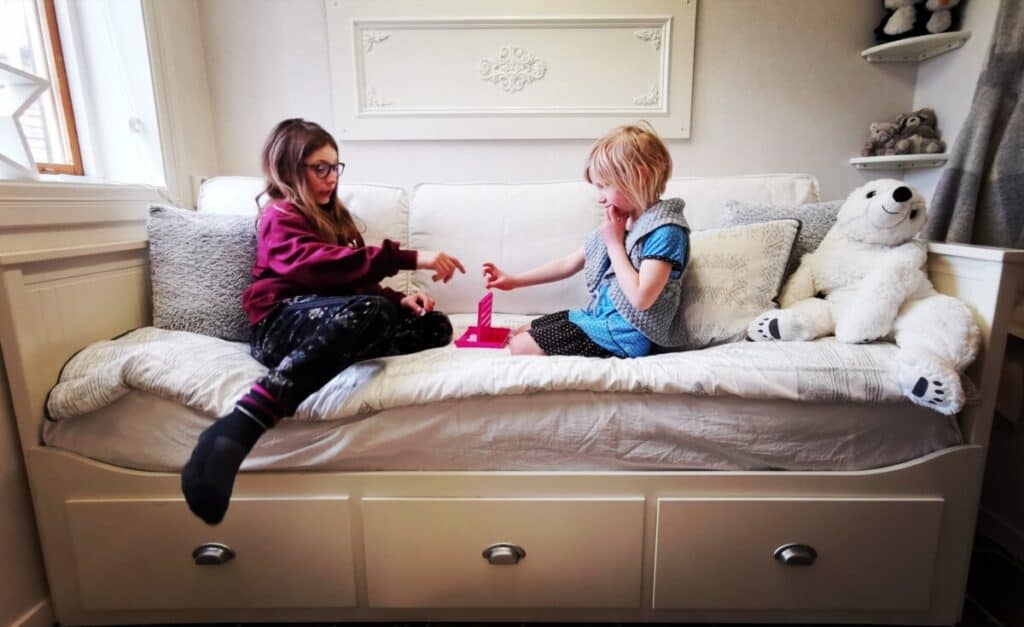
Games Tips for Parents of kids with ADHD.
If your child has ADHD you may need to play short games at least to start with.
I suggest picking a game for your child that allows YOU (the parent or adult) to decide how long you will play the game.
If you child has a very short attention span, start with ten minutes, then play the same game every day and increase the time by a minute a day.
This should slowly increase your child’s attention span.
When your child feels the game has become extremely boring, buy a new one or trade games with a friend.
Just remember that it must be a game where the players can adjust the time played.
If you want to play harder games let him/her run off between turns as long as he is in earshot and can easily be called back to take his/her turn.
Games Tips for Parents of kids who have Dyslexia.
If your child struggles with reading, explain the rules of a new game, the first few times you play.
Hopefully, your kids will soon remember the rules and will be able to play with a friend, without the need for your help.
When you have kids with dyslexia or other reading disorders you have to take into consideration that games that require large amounts of reading or fast reading will not work for them unless you pair them with an adult.
Some games won’t work at all if they can’t read by themselves.
Gestures is one game that comes to mind. It requires quick reading. We tried this game with Maria and it was a disaster.
If you have an older child who struggles with reading, you can buy a game for younger kids which requires some reading but doesn’t overwhelm the child.
This is a good way to sneak in some reading that your child won’t find frustrating.
If the game is at their actual reading level but every once in a while adds just a little bit of a challenge then you have found the right game.
A teacher friend recommended different forms of Lotto or Bingo Lotto, like simple words Lotto or Building Language lotto.
I even saw a learning phonics Lotto!
Other games that require just a little reading are Headbandz, Charades, Telestrations, and Basic Settlers.
I hope that this post has given you a deeper understanding of ADHD, Dyslexia, and how games can help your child.
Check out my other posts about games we love for different age groups. Click below.
10 Games 3-6 year olds, with ADHD and Dyslexia, can play!
My family likes to play these games despite ADHD, ADD, and Dyslexia.
We adapted all our game posts into categories by age.
If you need some encouragement try reading my post, 16 positive traits of dyslexia, A new perspective
Or check out my post 14 Positive traits of ADHD, that I see every day.Fourteen positive traits of ADHD that I see everyday!
Moms (and Dads too) make sure you take care of yourselves!
You need to make sure you are not falling apart if you are going to properly take care of children with diagnoses.
Annie
If you need inspiration about how to care for yourself when you are caring for a child or loved one who needs your time and attention read my post 21 ways to care for yourself while caring for others.
This is what kept me from getting completely depressed!
21 ways to care for yourself while caring for others
If you need book tips and more information check out our page OUR FAVOURITE RESOURCES. Our Favourite Resources
(Source) https://www.psychologytoday.com/us/articles/200504/laughter-the-best-medicine
(Source) https://www.harborsidewb.com/
(Source) https://bpsmedicine.biomedcentral.com/articles/10.1186/s13030-019-0146-3
Copyright Annie Eklöv
